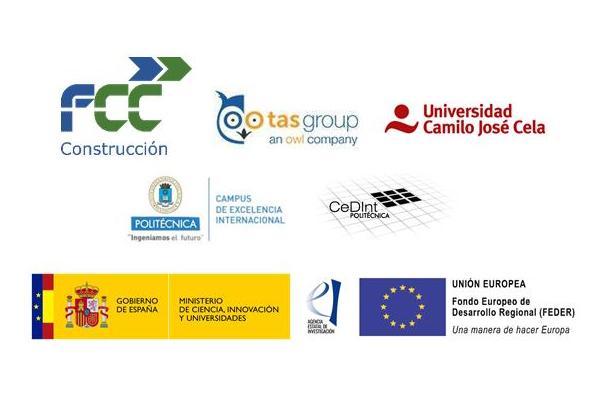FCC Construccion and UCJC begin the PIELSEN R + D + i project, in which a 3D homeostatic architecture will be developed to create a sensitive, intelligent and adaptive skin on building facades
FCC Construccion and UCJC begin the PIELSEN R + D + i project, in which a 3D homeostatic architecture will be developed to create a sensitive, intelligent and adaptive skin on building facades

The body's ability to self-regulate itself to maintain internal equilibrium against changes that occur in the external environment is known as homeostasis. Human skin is a complex system that regulates the exchanges that take place between the internal organism and the external environment, whether these are thermal, acoustic, tactile, etc. As aids to that homeostasis, clothing and architecture must replace that differential that causes a biological imbalance.
In this way, the work of architecture is conceived as the material response of the human being to the factors of aggressiveness of the environment in order to generate the conditions that allow inhabiting a territory, and where the envelopes of the facades present a design that manages to fulfill a role similar to that of the skin. These should always be designed in such a way that they give a coordinated response through the interconnection with the rest of the components of the constructive system, generating an interstitial space between elements that can be understood as a homeostatic skin, that reacts according to its environment and that allows to preserve the conditions of the interior of the houses, and with it, the habitability and the health of the occupants.
From this premise was born the R & D + i project "PIELSEN: Homeostasic 3D architecture for the creation of adaptive intelligent sensitive skin in building facades", financed by the Ministry of Science, Innovation and Universities within the call Challenges-Collaboration 2017, and whose consortium is led by FCC Construccion, together with the participation of TAS Iberia, software and services company; the Camilo José Cela University, the Polytechnic University of Madrid through the Energy Efficiency and Internet of things group of the Center for Integrated Domotics (CeDInt-UPM) and the Acor Technology Group working group.
The objective of the project, which starts from an idea of a research team from the Faculty of Architecture of the UCJC, focuses on the development of an intelligent envelope for buildings that acts as a Sensitive Skin. The starting point is to make it based on 3 components (3P): a hydrogel / enveloping piezoelectric polymer material (skin), a supporting structure of the surrounding material (folds) and a meshing system of 3D sensors (pores). The project is scheduled to take place over a period of 36 months (2018-2020).
The PIELSEN System provides a new viable architectural element from the technical-economic point of view, which is developed with a concept between bioclimatic architecture and Smart building, much in demand today by a society increasingly aware of the environment. sustainable and natural, involving the development of solutions not only in the field of architecture and construction, but in advances related to their impact on health, welfare, the environment, energy resources and technological innovation applied to the buildings themselves.
The objective is to be able to have skin, pores and folds for buildings, that even generate their own energy based on the latent energies surrounding buildings (sun, wind, electrostatic, wind, piezo ...), to be incorporated as intelligent constructive solution integrated in the work, aimed at a type of market that saves costs to final consumers, increasing the use of clean energy and focusing on the study of the following innovations:
1. Adaptive enveloping materials with embedded electronic monitor / sensor devices
2. Hydrogels of changing state for tesserae on the facades
3. SW (Wireless Sensor) environmental monitor on onboard boards FPGA RF / 5G / IP (SW in firmware)
4. SW control in the cloud for the building supervisor computer
5. Tele-support platform and trans-urban preventive actions (SW tele-support-monitoring)
6. Mobile adaptive systems in architectural structures (connectivity + analysis + gateways)
The knowledge of FCC Construccion in the operation and implementation of smart envelope systems and Smart Cities, will result in high added value in tender offers and in future tenders for works contracts. Specifying in the project objective, the knowledge generated in the operation and implementation of smart envelope systems for their potential use in Smart Cities, allows to elaborate offers with a high added value.








